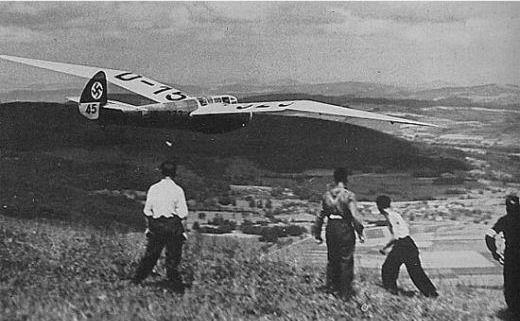| Type |
Two seat glider |
| Dimensions |
Length 7,36 m , height , span 17 m , wing area ,Göttingen 681 / around 693 |
| Weights |
Empty kg , loaded , max. take off weight |
| Performance |
Max.. speed , cruising speed , range , endurance , service ceiling , climb |


The Minimoa, was built by the Schempp-Hirth Factory and designed by Dr Wenk and Eng. Faber and overseen by the famous glider pilot, Wolf Hirth. It was to be a two-seat trainer version of the Minimoa and intended for series production starting with an initial order of three, but in the end, only one example
was to have been built. Minimoa’s were known for their stable straight flight but the extreme gull is known to require a lot of heavy aileron input to produce roll and could not compare with the flight characteristics of today’s gliders. The Minimoa tended to be a bit hairy in violent gusty conditions.
It was conceived in 1935 at a time when there were very few two-seaters in existence. From its very inception, the standard single-seat Minimoa had been designed with the possibility of creating a two-seat version. In Flugsport of 21st August 1935, there is a note which states “Based on a payload of 150kg the wing can also be used for a 2 seater fuselage, which is still to be designed.
Hirth thought that stability when thermalling, especially in cloud, would be greatly advantageous, hence the exaggerated gull wing of the Minimoa. This also gave considerable wing-tip clearance. This was a very attractive feature as virtually all gliding sites were on hills, often covered in deep heather which could catch the tip and cause a damaging ground loop. The main spar of the glider was constructed in one piece as a normal straight tapered beam before being steam-bent at the gull break to create the famous wing shape.
Schempp-Hirth worked hard to meet the deadline for the Rhön Competition of 1937. It was designated with a works serial number of 150 and registered as D-15-923. At the Rhön event, it was given the nickname of “Mozwoa” according to one magazine of the time.
The changes from the standard Minimoa were as follows :
The fuselage was built 360mm longer than the single seat version, the extra length being added to the nose section ahead of the leading edge of the wing.





